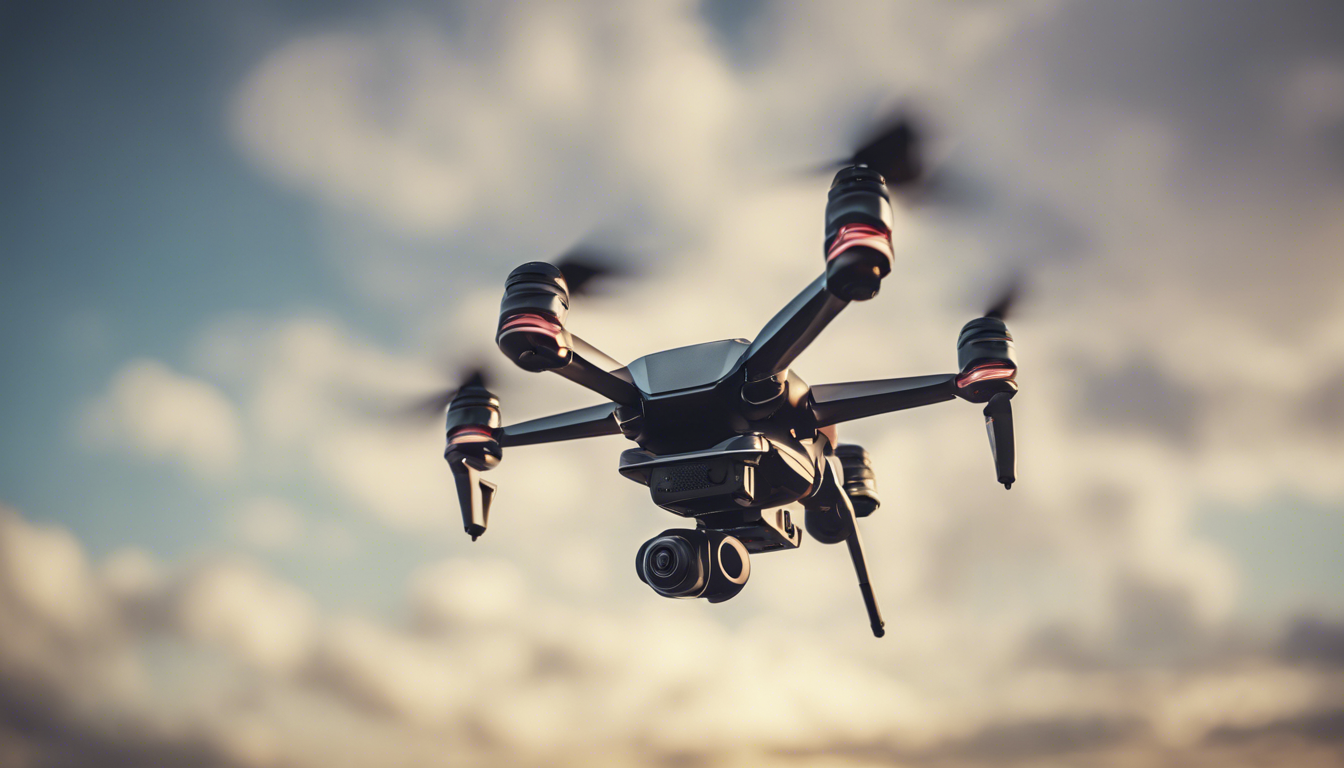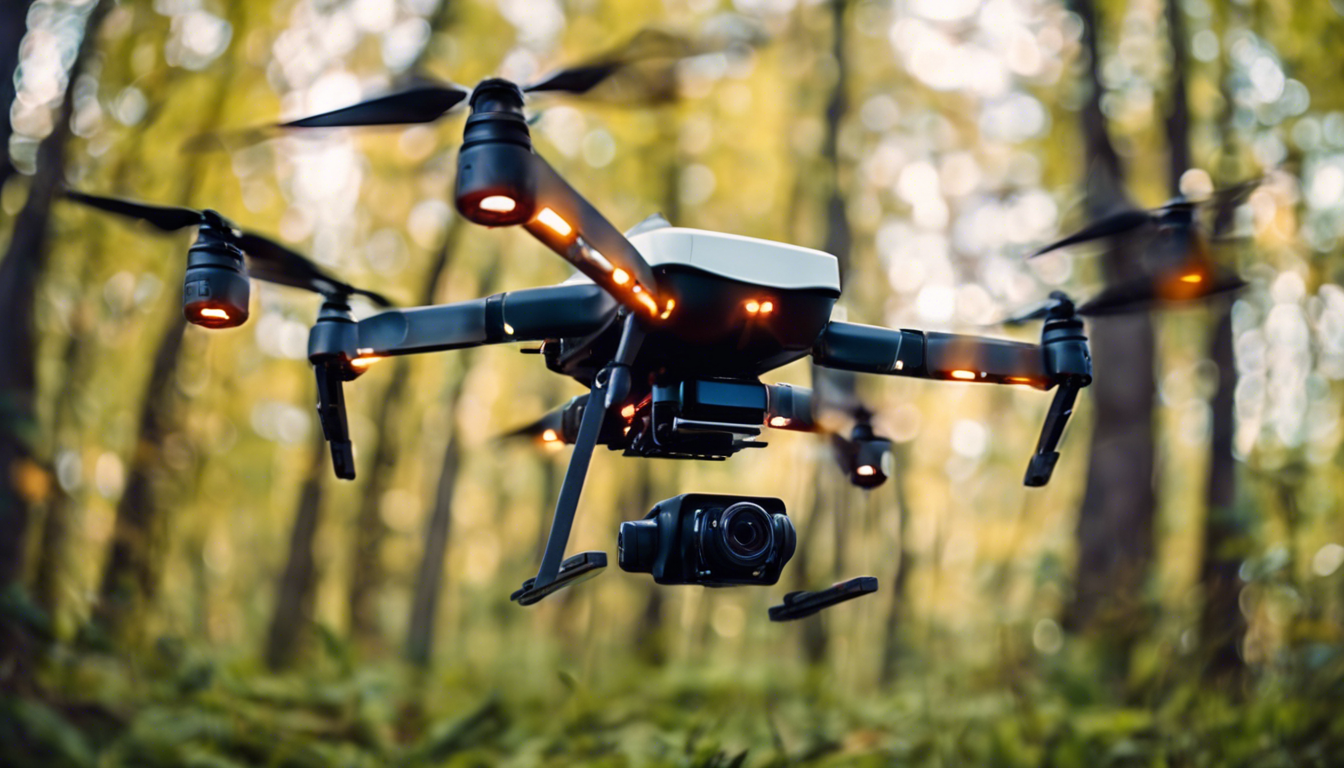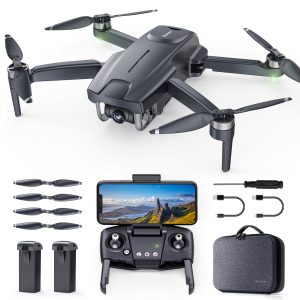
Overview of Drone Technology in Emergency Management
Imagine a swarm of buzzing drones zipping over a disaster-struck area, weaving through the debris and chaos to map out damage, locate survivors, and deliver critical supplies. This isn’t a scene from a futuristic movie—it’s the powerful reality of how drone technology is revolutionizing emergency management today.
When disaster strikes, time is of the essence. Traditional methods of surveying damage and searching for survivors are time-consuming and often dangerous. That is where drones, also known as unmanned aerial vehicles (UAVs), swoop in to save the day—quite literally. With the ability to cover vast areas quickly from the air, drones provide emergency responders with a bird’s-eye view this is invaluable in assessing situations and planning rescue efforts.
One of the most standout features of drones is their versatility. Equipped with high-resolution cameras, thermal imaging, and sometimes even listening devices, these nifty gadgets can pinpoint a person’s location through heat signatures or even detect the faint sound of someone calling out beneath rubble. Plus, they can scoot into areas where helicopters fear to tread, such as tight urban spaces or toxic environments.
But it is not just about finding people. Drones can lug small, essential items like medications, communication devices, and food to areas that are tough to reach by foot or vehicle. Imagine tossing a rope across a chasm, but it’s a drone delivering insulin to an isolated diabetic or a satellite phone to a stranded family. Quick, efficient, and potentially life-saving.
Let’s take a second to marvel at the tech behind these aerial helpers. Autonomous flight capabilities mean that drones can follow pre-programmed routes, dodge obstacles, and even make decisions on the fly. Combine that with real-time data transmission, and you’ve got yourself a live feed of everything happening on the ground, served straight to the command center. It is like giving relief workers a cheat sheet to the disaster zone.
But what about the little-known heroes that aren’t in the limelight yet? Consumer drones, the cousins of their more advanced commercial counterparts, are stepping up in unexpected ways. Hobbyists and drone enthusiasts often volunteer their fleets in the aftermath of a disaster to support professional teams. These consumer models might not carry all the high-tech bells and whistles, but in a pinch, they offer extra eyes in the sky to bolster the efforts of relief agencies.
Heck, even drone mapping software is getting in on the action. This tech stitches together drone-captured images to create detailed, 3D maps of an area—maps so precise they can reveal changes in the landscape down to the last centimeter. Emergency teams can use this data to predict hazards, like weakened building structures or potential flood routes, before they pose an additional threat.
So, while drones might have started off delivering packages or taking snazzy holiday snaps, they’re now stepping into a grittier role. As aerial first responders, drones are proving to be indispensable allies in the high-stakes world of disaster relief. And the coolest part? They’re just getting started.
Case Studies: Effective Drone Use in Recent Disasters
Now, let’s zoom in on some real-world heroics where drones have soared beyond expectations in the throes of calamity. Picture this: it’s 2017, and Hurricane Harvey is wreaking havoc in Houston, Texas. Streets have turned into rivers, homes are islands, and traditional rescue operations are struggling. Enter the drones. Volunteer drone operators team up with professional rescue teams, providing critical aerial views that enable the identification of stranded citizens and the safest routes for boat rescues. These nimble machines also assess infrastructure damage, guiding repair teams to the most crucial areas first. It is a stellar example of technology and human grit working hand in hand.
Flip the globe to Nepal, still healing from the wounds of the 2015 earthquake. Here, drones didn’t just map out destruction for rebuilding efforts—they helped restore land rights to villagers. How’s that for high-flying heroism? With land records buried beneath the rubble, drones were used to create new cadastral maps, making sure people didn’t lose their homes twice—first to Mother Nature, then to bureaucratic snags.
In another corner of the world, the aftermath of Typhoon Haiyan in the Philippines saw drones zip across the sky to assess and document the damage. They provided invaluable data, including the condition of crop fields, which helped in distributing aid more effectively where it was needed most, transforming disaster response into a fine-tuned operation of hope and rejuvenation.
And let’s not forget the smaller-scale yet equally impactful tales—like in the aftermath of the Midwest floods in 2019, where consumer drones, piloted by everyday folks, supported emergency teams by locating survivors and assessing rising water levels. These local heroes, armed with their off-the-shelf drones, brought a new perspective that complemented the high stakes work of professional responders.
Interestingly, these unsung drone pilots often have a profound knowledge of their local area, which, when combined with their flying prowess, creates a formidable force in disaster scenarios. A drone enthusiast might know that a certain grove of trees indicates a hidden pathway—knowledge that proves invaluable when overlaying drone imagery onto crisis maps.
In the chaos of a disaster, these consumer drones often become the unexpected underdogs of relief efforts. Though they might not carry the heavyweight technology of their commercial siblings, their agility and the heart of their operators write unsung chapters of resilience and recovery. They offer a glimmer of connectivity in fragmented disaster zones, where even a single battery-operated lifeline from a consumer drone can mean the difference between life and death.
So, while consumer drones might not make the six o’clock news as the grand saviors of disaster relief, their quiet contributions are shaping a new narrative. One where every little bit helps and where the community’s spirit can take flight, quite literally, to bring aid to those in need. It’s a narrative where everyone with a drone and a will to help can play a part in the beautiful symphony of humanity uniting against disaster.

Challenges and Considerations for Drone Deployment
With all the buzz—pun intended—around the wonders of drones in disaster relief, we mustn’t gloss over the bumps and hiccups associated with deploying these flying marvels. First off, it is important to acknowledge that the skies can get pretty crowded during a crisis. Now, imagine a fleet of drones zipping around without a traffic cop in sight. You’re looking at potential mid-air collisions, especially when you’ve got both consumer and professional drones trying to coexist in an already stressful situation. And that’s where the story gets a tad more complex.
Let’s chat about regulations for a sec. There’s a whole spaghetti bowl of legalities and rules governing the use of airspace. These regulations aren’t just pesky paperwork; they’re crucial for making sure that drones don’t interfere with rescue aircraft or end up causing more chaos in already tense scenarios. So while it’s awesome that civilians want to pitch in with their personal drones, there’s a real need for coordination to prevent any legal faux pas or, worse, real dangers.
Then there’s the weather. Believe it or not, your everyday consumer drone isn’t exactly a fan of high winds or pouring rain. Heck, even the beefier commercial types can fumble in less-than-perfect weather conditions. And since disasters don’t exactly make appointments during calm, sunny days, that is kind of a big deal. If you manage to send up a drone in a storm, you better cross your fingers that it won’t end up as an expensive kite tangled in a tree.
Connectivity—now this is a word that can make or break a drone’s usefulness in disaster relief. You see, drones usually depend on GPS signals and data links to navigate and stream all those crispy images back to base. If a disaster knocks out the usual communication networks, maintaining control over your flock of drones becomes a game of chance. Imagine trying to fly your drone back home when the GPS goes on a coffee break. Not fun.
And then there’s the tech savvy. We’re not all born drone whisperers. Operating a drone requires a certain touch, a bit of know-how that not every well-intentioned volunteer might have. Pair this with the pressure cooker of a disaster scenario, and it’s plain to see how things can spiral. Even something as simple as replacing a spent battery mid-mission can become an ordeal when you’ve got gloves on and there’s a clock ticking loudly in your ear.
So, before these high-flying helpers take to the sky au naturale, there’s also the question of privacy. People affected by disasters still have rights, and those rights don’t just vanish amid the wreckage. When a drone is zooming over a backyard capturing footage, it could very well be snooping where it is not supposed to. The conversation about privacy in an age where cameras can fly is one that’s still evolving and opens up a whole can of ethical worms.
On a lighter note, there’s the sheer creativity of drone pilots who rig their flying buddies with handy additions. You’ve got folks strapping everything from first-aid kits to flotation devices onto their drones. It is like a scene from a heartwarming DIY show, except the stakes are way higher and there’s no commercial break coming to ease the tension.
But let’s get real—the amazing potential of drones in disaster scenarios is undeniably strong. They bring eyes, ears, and hands where they’re desperately needed. The challenge lies in weaving these individual threads into a coherent quilt of disaster response. It is a work in progress, sort of like teaching a group of line dancers to moonwalk simultaneously—it requires coordination, practice, and perhaps most importantly, understanding that the dance floor is constantly shifting.
In learning to navigate these challenges, the impact of drones in disaster relief can only soar higher. As technology advances and regulations become clearer, the teething pains will ease. For now, we embrace the chaos, strap on our thinking caps, and tinker with our flying robots, all in the hope of a better, swifter response when Mother Nature throws her next curveball.
Future Directions for Drones in Disaster Relief Efforts
Peering into the crystal ball of drone tech, one can’t help but get a little giddy about the future of drones in disaster relief efforts. We’re talking about a horizon where drones do more than fly—they communicate, adapt, and even ponder on some level to help humans in distress. Picture a disaster zone peppered with drones that not only collect data but also analyze it on the go, making split-second decisions to aid in rescue missions.
Imagine if drones could autonomously collaborate, forming a mesh network in the sky—a sort of flying internet—to relay information and provide comprehensive coverage without relying on the shaky ground infrastructure. In future disaster scenarios, these self-organizing swarms of drones could perhaps even construct temporary communication networks for ground teams cut off from the rest of the world.
Energy is another frontier. Why? Because a drone without juice is like a hero without a cape—it simply won’t fly. This is why researchers and engineers are digging deep into alternative power sources. Ponder solar-powered wings assisting battery life, or wireless charging stations perched high up on buildings or tethered to balloons. There could also be drones that perch, like birds, conserving energy while continuously monitoring an area and then relaunching when needed.
Artificial intelligence (AI) is already a hot topic in tech circles, but it’s the emergency services that might get the next big AI boost. We can anticipate sophisticated algorithmic advancements that enable drones to identify survivors through debris using pattern recognition or to skillfully navigate the unpredictable terrain of a disaster site. It’s a melding of the steel and silicon with cognitive computing, giving drones a smarter edge.
Let’s not sideline the physical advancements either. Materials science is going all out to craft drones that can withstand extreme weather conditions—meaning the high winds and rains of a storm might do little more to a rescue drone than a slight inconvenience. And size matters too. From micro-drones resembling insects flitting through tight crevices, to larger cargo-carrying counterparts lifting substantial aid packages—there’s scope for all sizes in the rescue arsenal.
There will be a day when drones could come equipped with soft robotics elements, such as grippers gentle enough to provide first aid or deliver food without the need for human hands.
And for the humanity in technology, we’re witnessing the dawn of a community-led drone revolution where education and engagement programs could make flying a drone for good as common as CPR training. Fiction, you say? Perhaps. But it is a future this is getting closer every time someone grabs a controller and takes to the skies to make a difference.
In the grand scheme of things, the future for drones in disaster relief is a tantalizing tapestry of potential—a blend of community empowerment and advanced technology. So while we wait for tomorrow’s promises to take flight, let’s keep our eyes to the sky and our hearts hopeful. Because in the end, the true north of innovation is the compass of human compassion, guiding our drones towards those who need them most.
